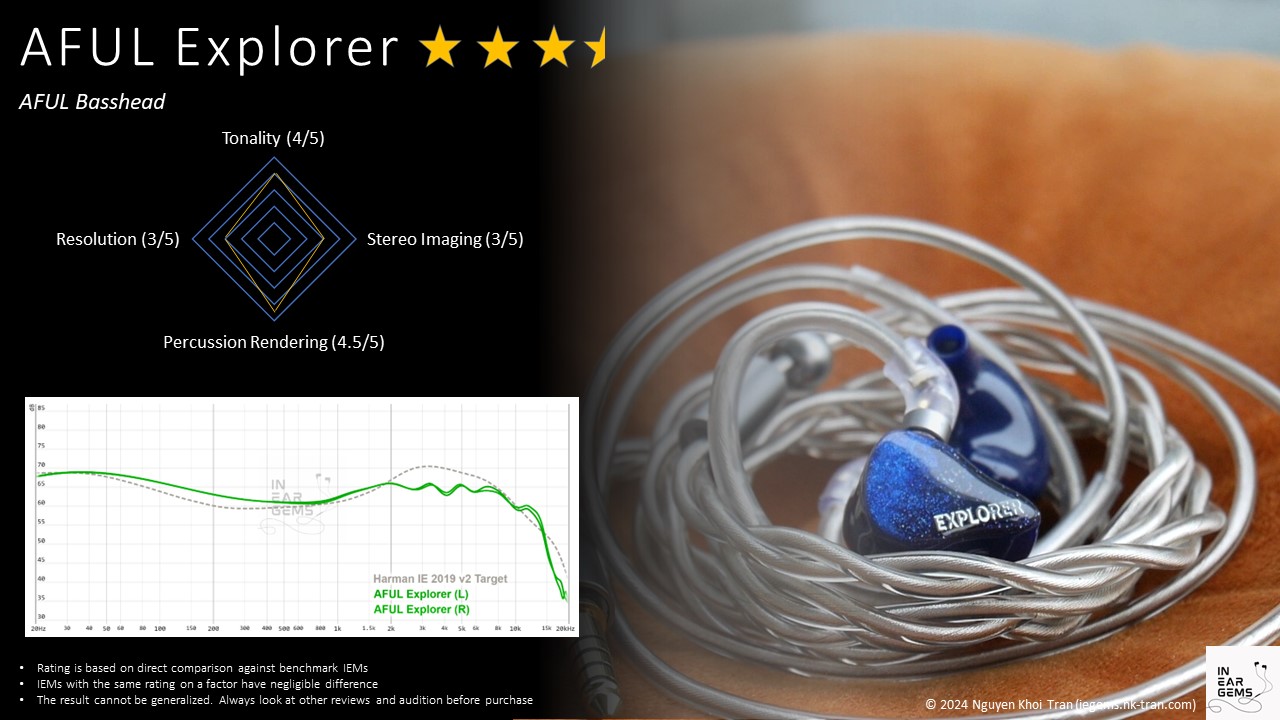AFUL Explorer - The AFUL Basshead
If you have ever talked about IEMs with me, you would likely notice two points: (1) I have a soft spot for the IEM manufacturer AFUL, and (2) I constantly refresh the news to wait for the release of the mythical AFUL flagship IEM - Cantor. So, needless to say, I was a bit disappointed when latest release from AFUL was not Cantor, but a 3-driver hybrid IEM named Explorer. Is it a distraction when the Cantor is getting ready for the limelight or another tour de force like the Magic One last year? Let’s read on to find out, my friends.

Forewords
- What I look for in an IEM is immersion. I want to feel the orchestra around my head, track individual instruments, and hear all of their textures and details. I’m not picky about tonality, as long as it is not make the orchestra, violin, cellos, and pianos sound wrong.
- I rate IEMs within with a consistent scale from 1 (Poor) to 3 (Good) to 5 (Outstanding). An overall ranking of 3/5 or above is considered positive.
- Ranking list and measurement database are on my IEM review blog.
- Terms used in my reviews are consistent with the glossary by Headphonesty
- This review is based on a review sample from Hifigo (Thank you!). I have no affiliation with or financial interest in Hifigo and AFUL.
- The unit retails for $119 at the time this review was published. Unaffiliated links: Aliexpress, HiFiGo, Amazon US, Amazon JP
General Information
The AFUL Explorer is a 3-driver hybrid IEM featuring a blend of two balanced armature (BA) drivers and one 8mm dynamic driver (DD). The BA drivers are responsible for mid and high frequencies, while the DD handles the bass. The Explorer employs a sophisticated 3-way electronic and acoustic crossover design, referred to by AFUL as the “RLC Network Frequency Division.” This system divides the incoming electrical signal among the three drivers, each of which directs sound through its own independent sound tube. These BA drivers are custom-designed, making their debut in AFUL’s previous model, the Magic One. The sound tubes themselves are 3D printed, incorporating intricate coils and curves to precisely manage air volume within the tubes. This design aids in sound dampening and utilizes Helmholtz resonance to fine-tune the frequency response of the drivers. Overall, the AFUL Explorer integrates several intriguing technologies. Do they translate to superior sound quality? We will see.
Non-sound Aspects
Packaging and accessories: The packaging of the AFUL Explorer is unassuming and compact. Within the box, the earpieces and accessories are securely nestled in custom-cut foam. A small, round carrying case is provided, along with six sets of generic silicone ear tips. The included IEM cable features a 2-wire design and terminates with a 4.4mm jack, though a 3.5mm version is also available. One notable downside of the cable is the aggressive ear hooks, which can become uncomfortable after prolonged use.
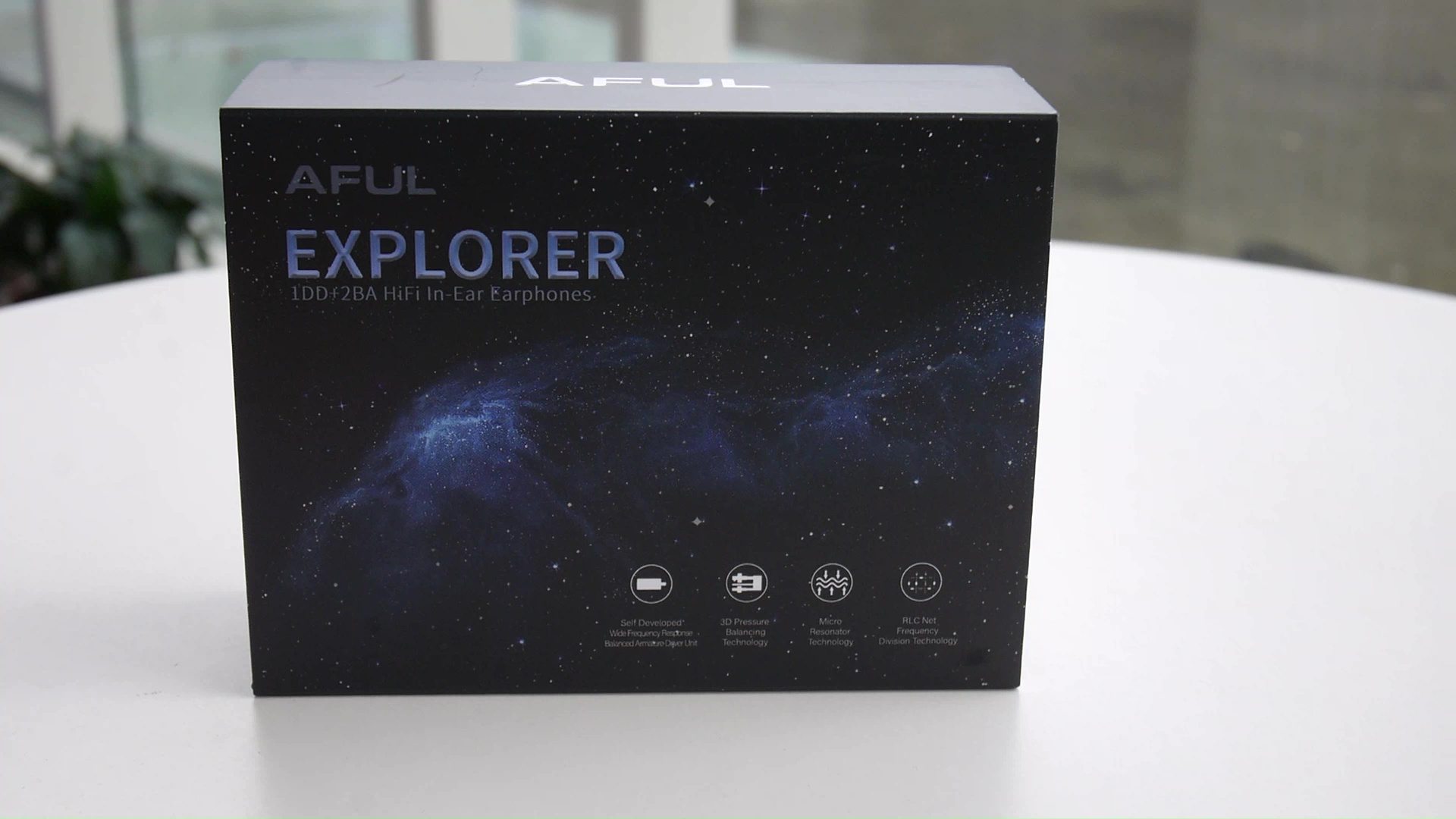
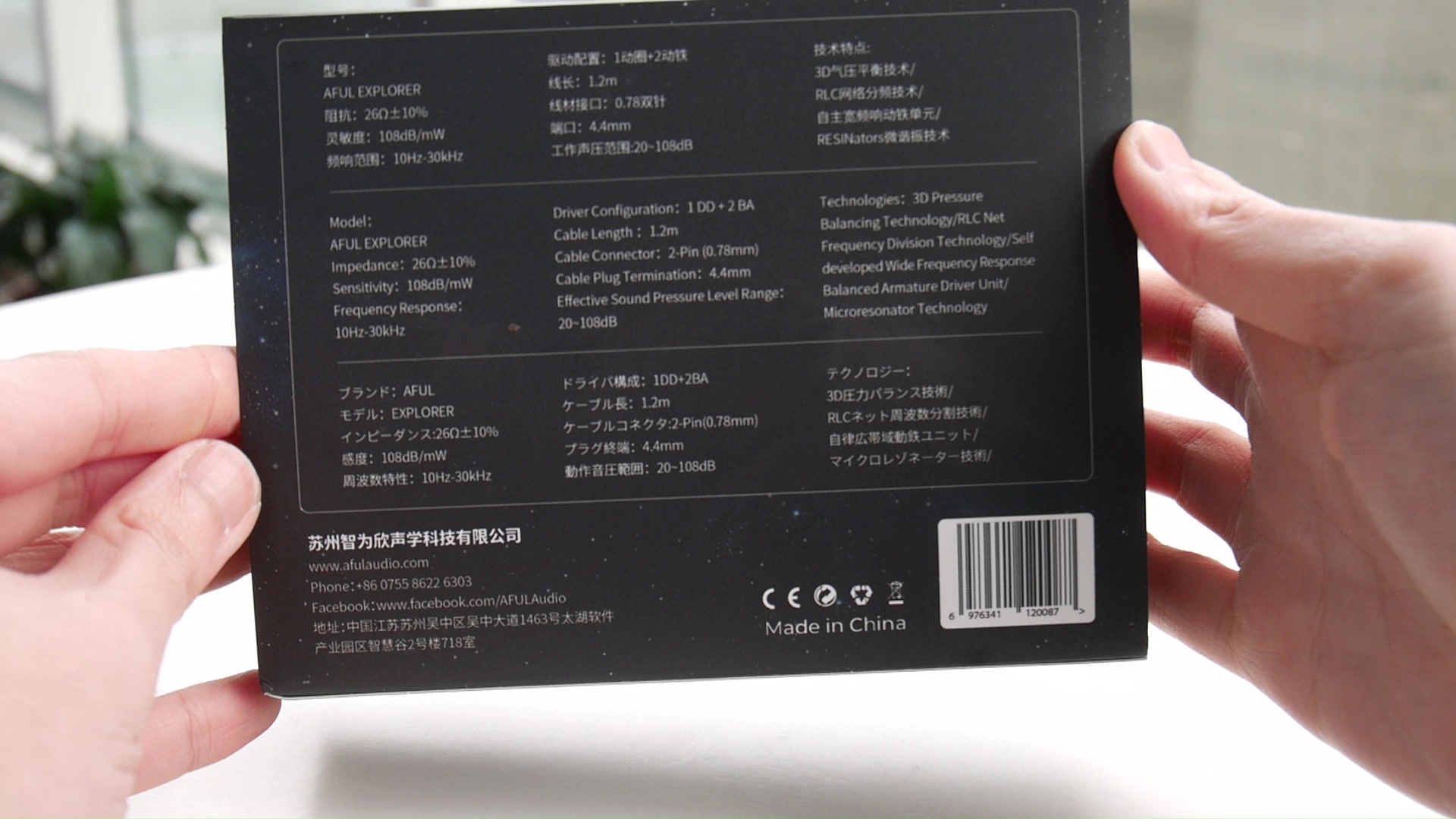
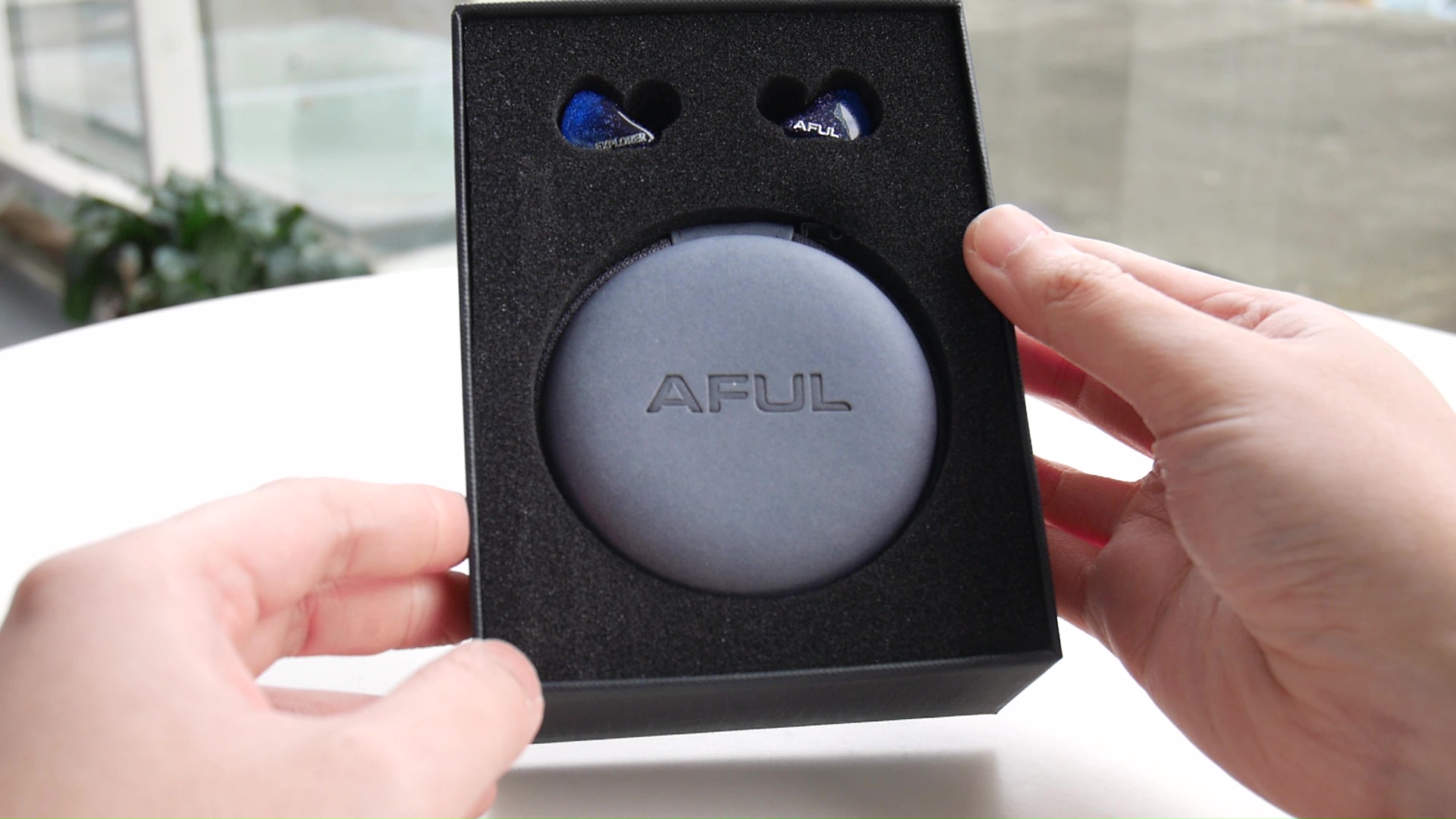
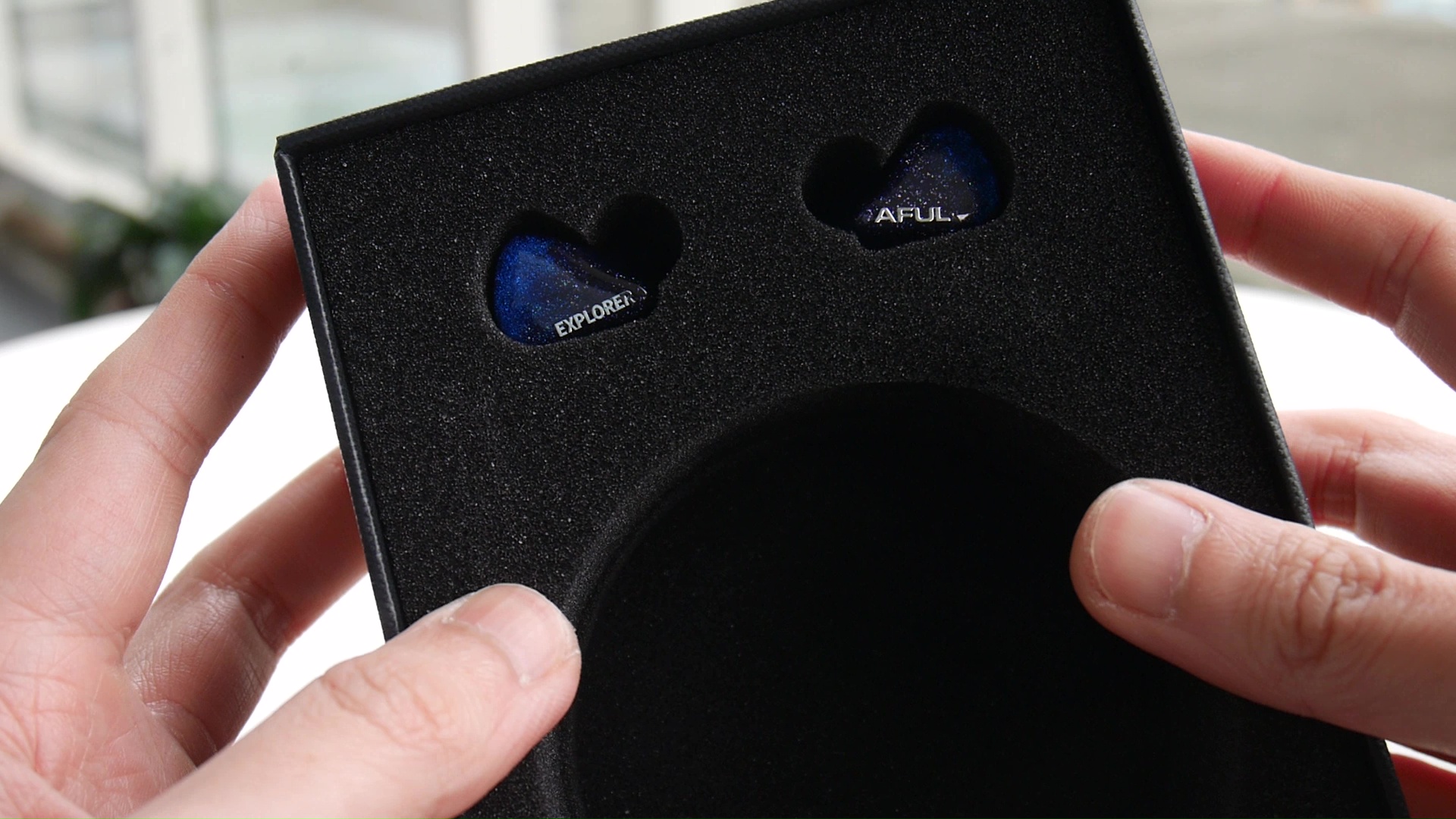
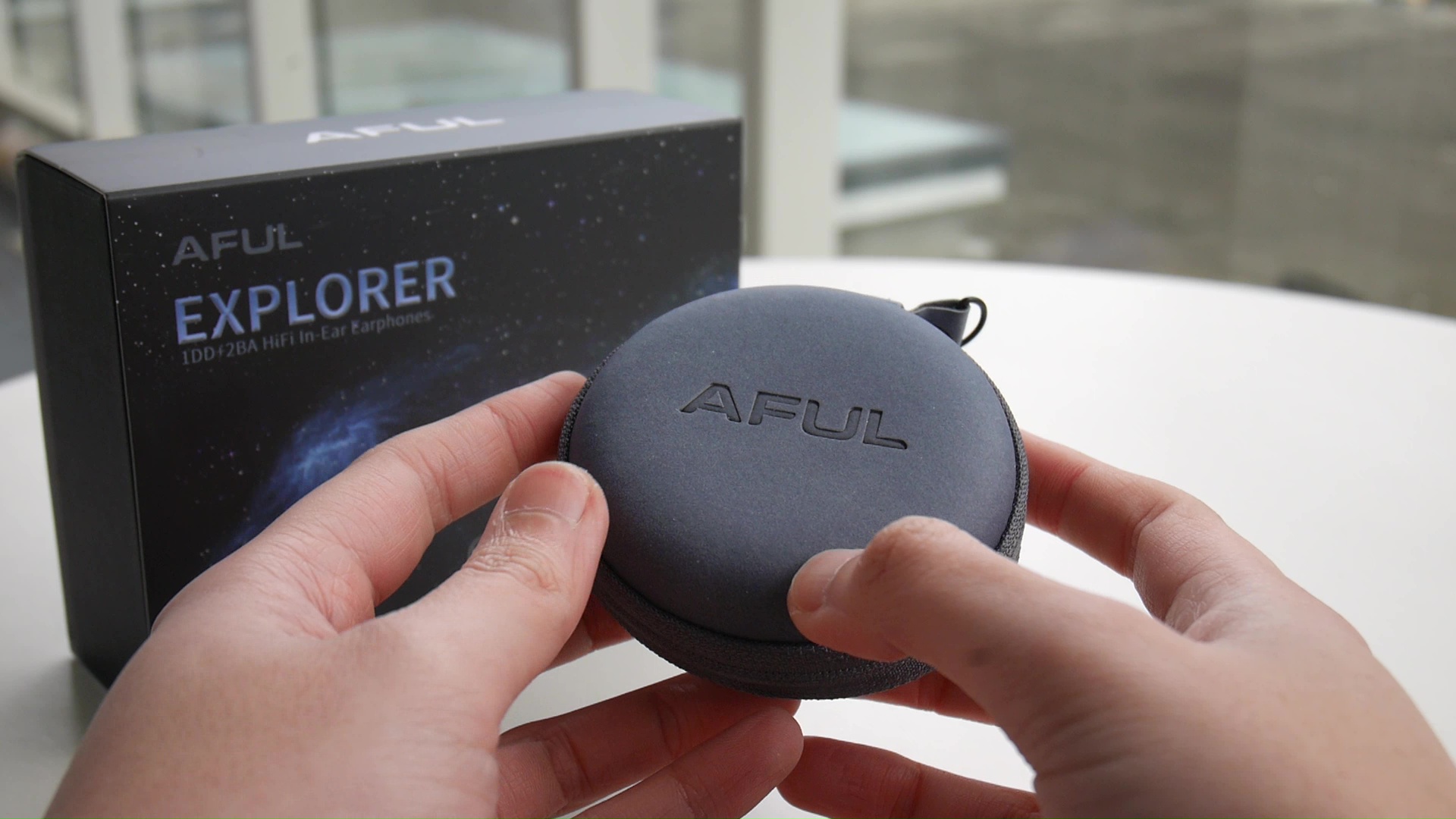
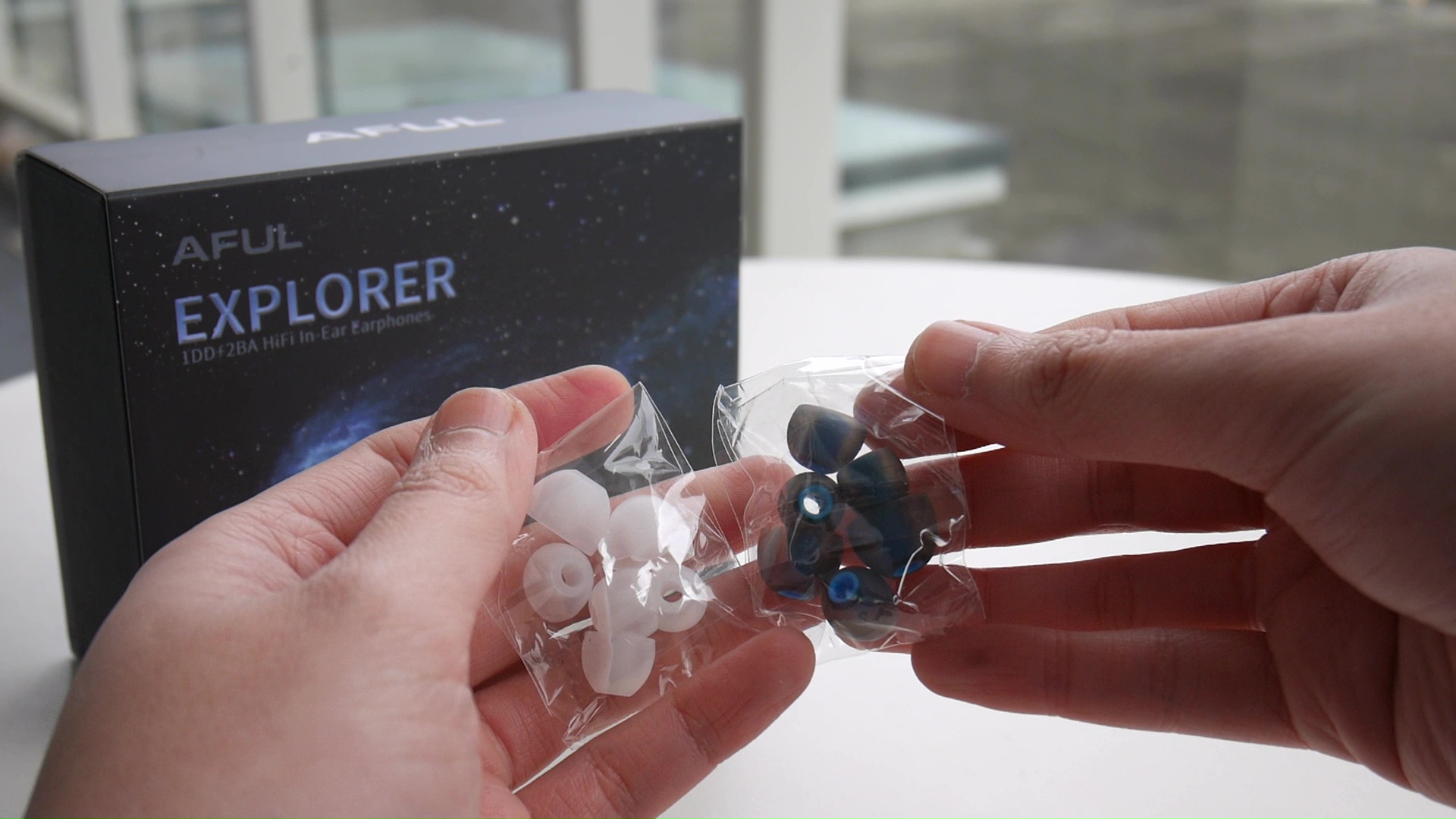
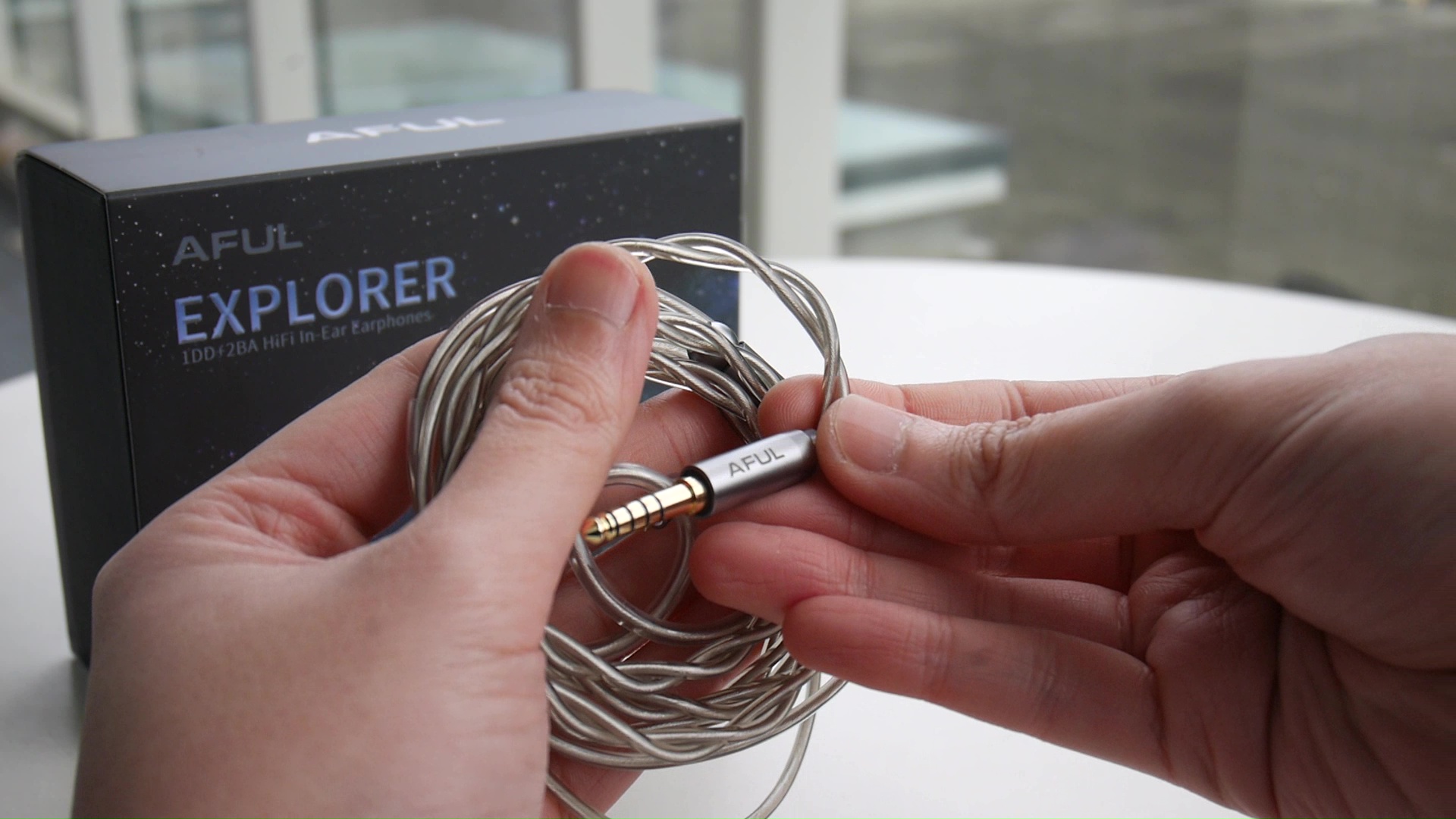
Earpieces design: The earpieces are crafted using 3D printing technology from a lightweight plastic material, polished to a smooth and shiny finish. Their design mimics the shape of Custom IEMs (CIEM), offering a stable fit. These earpieces are notably smaller than typical CIEM-shaped IEMs, enhancing their comfort and fit. The 2-pin connector on the earpieces sits flush, maintaining a sleek profile. A vent hole at the bottom of the IEM helps release pressure from the dynamic driver, while the narrow, moderately long nozzles are consistent with previous AFUL designs.
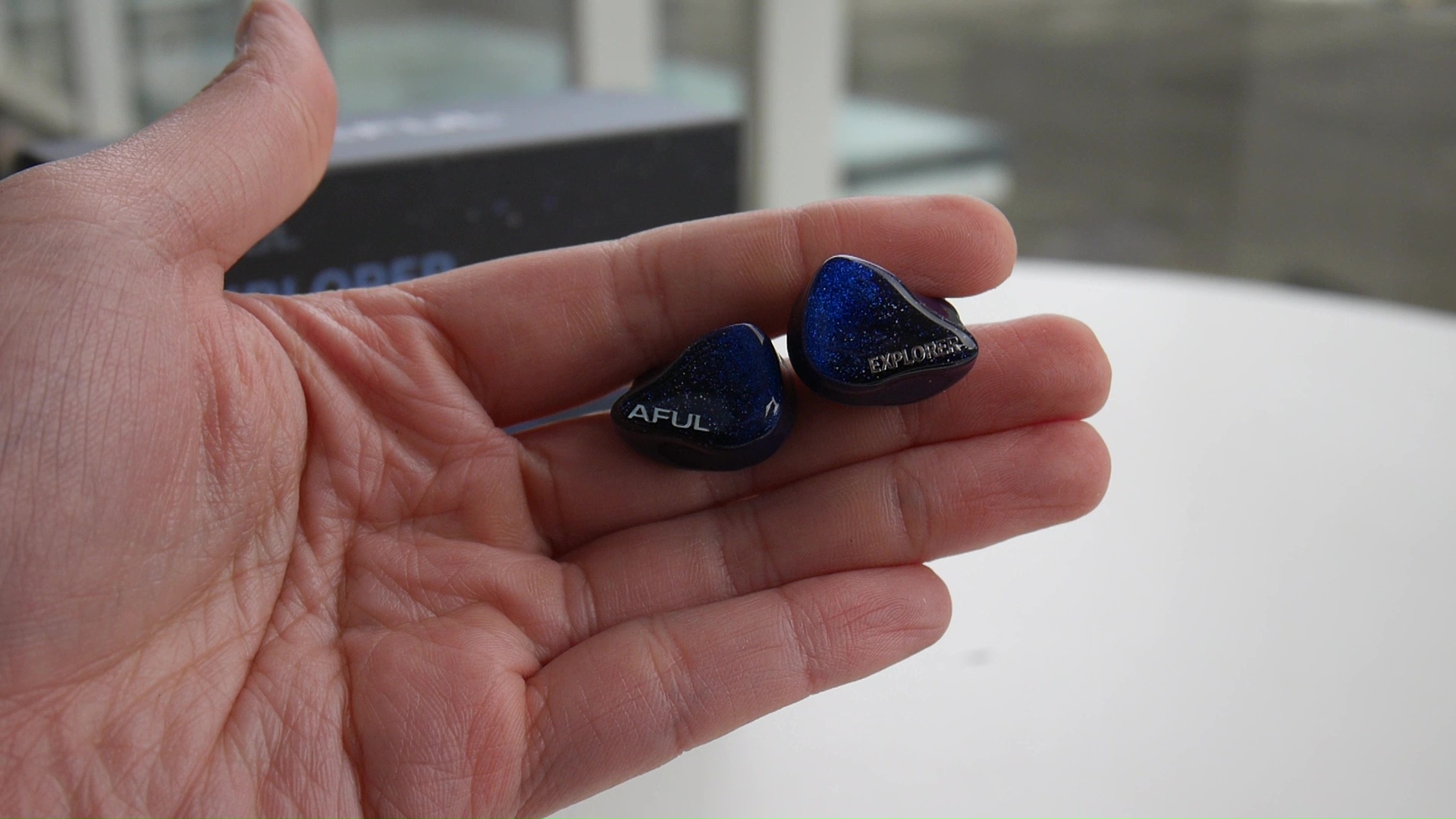
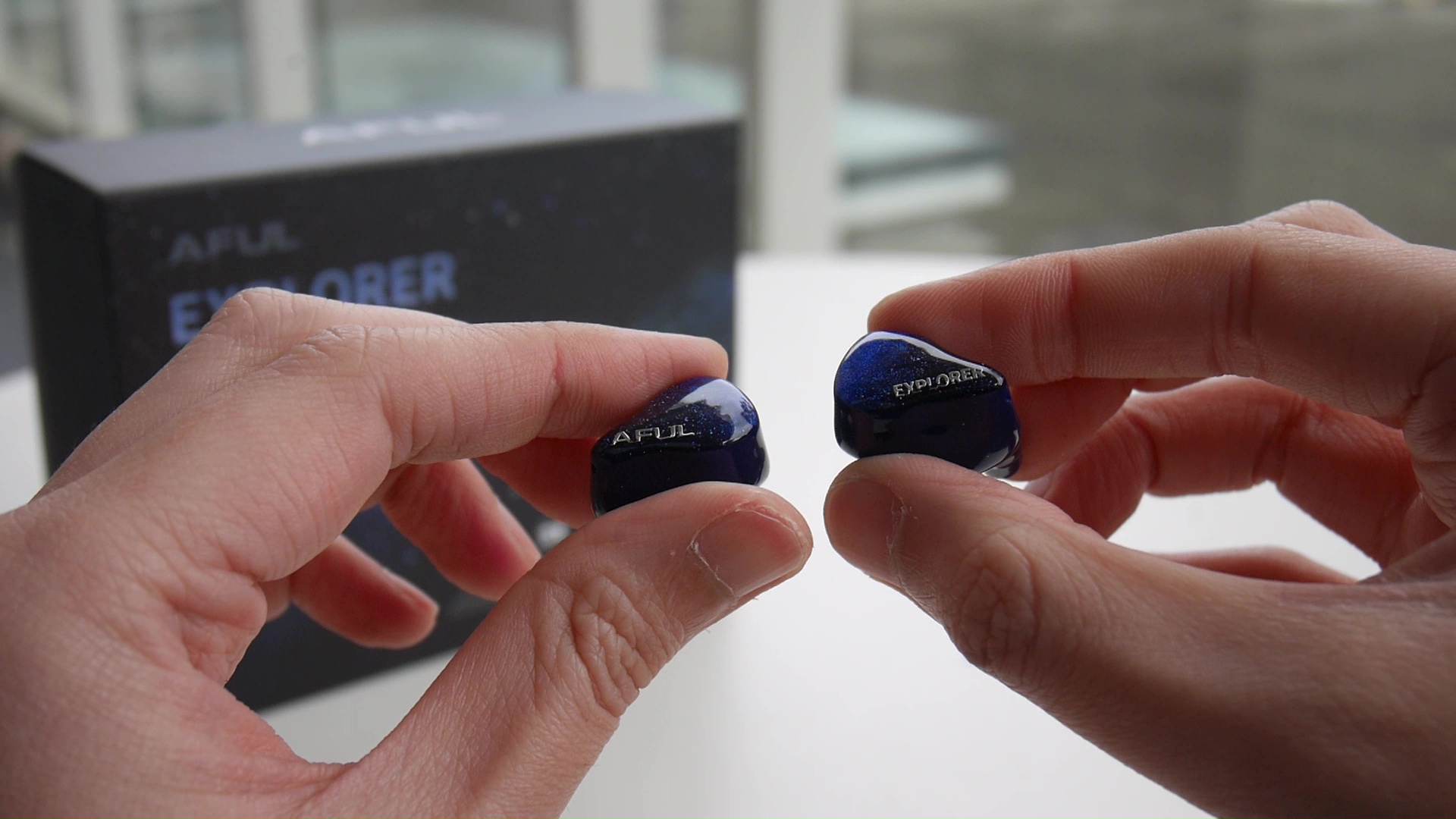
Fit, comfort, and isolation: Thanks to their small, lightweight construction and narrower nozzles, the AFUL Explorer earpieces provide a very comfortable fit. Noise isolation is commendable, making these IEMs suitable for use on public transportation or in noisy environments.
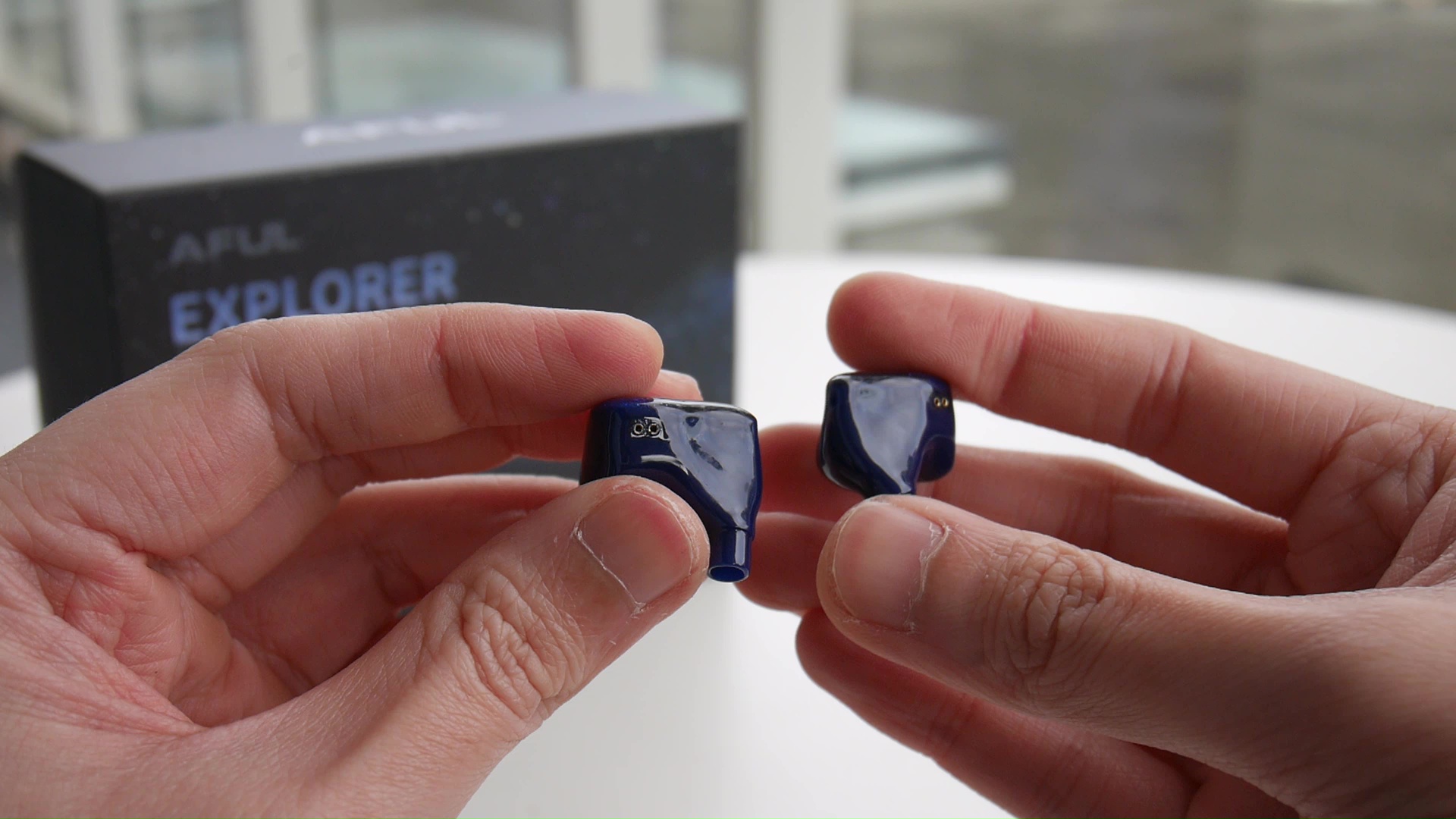
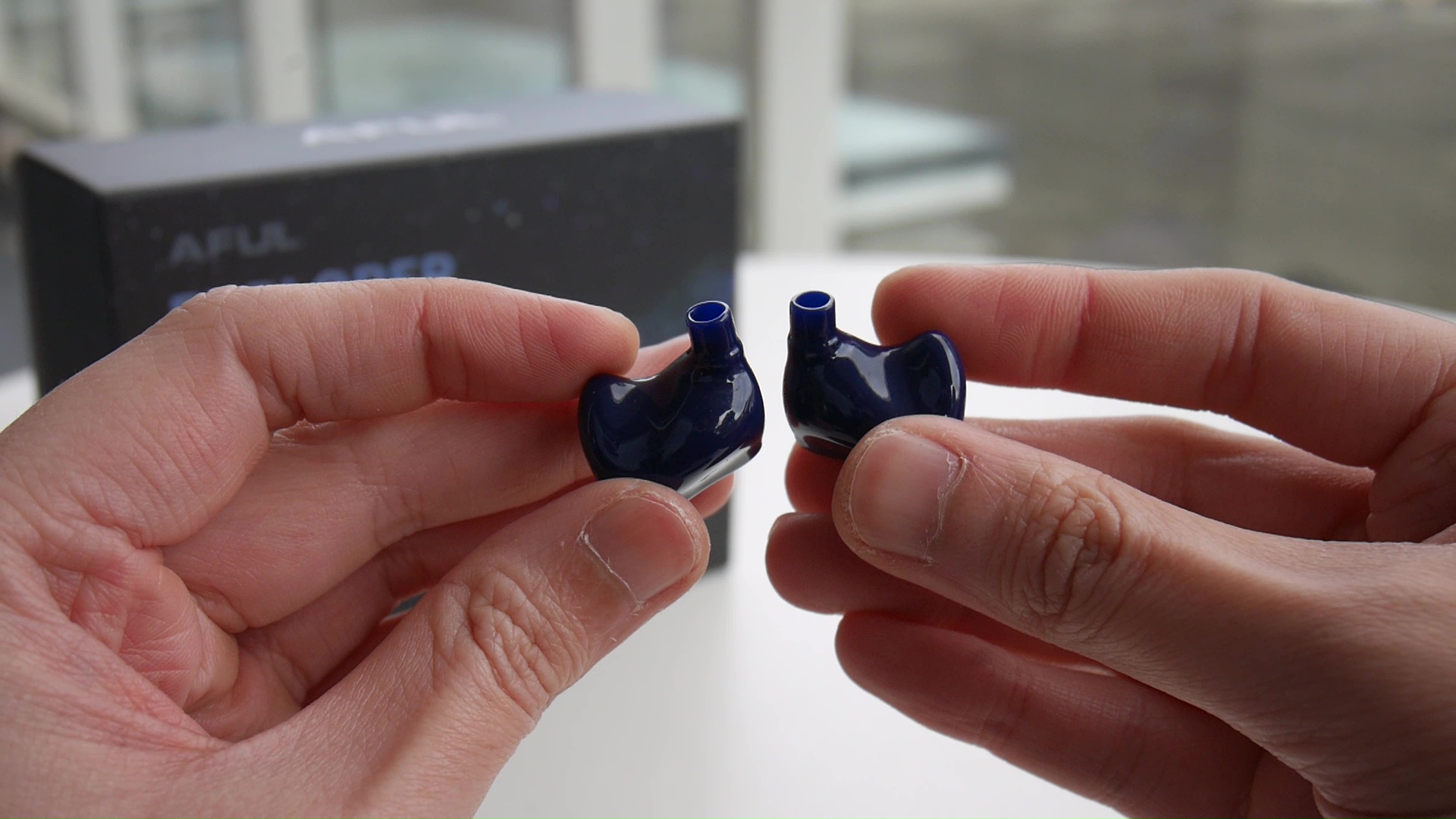
Ear tips recommendation: For optimal fit, ear tips that allow for a deeper insertion are recommended, ensuring the earpieces rest securely against the concha of the ears. Personally, I find Tri Clarion ear tips to be an excellent choice.
Sonic Performance
Testing setup:
- Sources: iBasso DX300, Luxury & Precision W4, FiiO K7, HiBy R3II
- Cable: Stock cable with 4.4mm termination
- Ear tips: Tri Clarion medium
Timbre, tonality, and tonal balance: Figure shows the frequency response of AFUL Explorer against the Harman in-ear target. Measurements were done with an IEC-711-compliant coupler and might only be compared with other measurements from this same coupler. Above 8kHz, the measurement might not be correct. Visit my graph database for more comparisons.
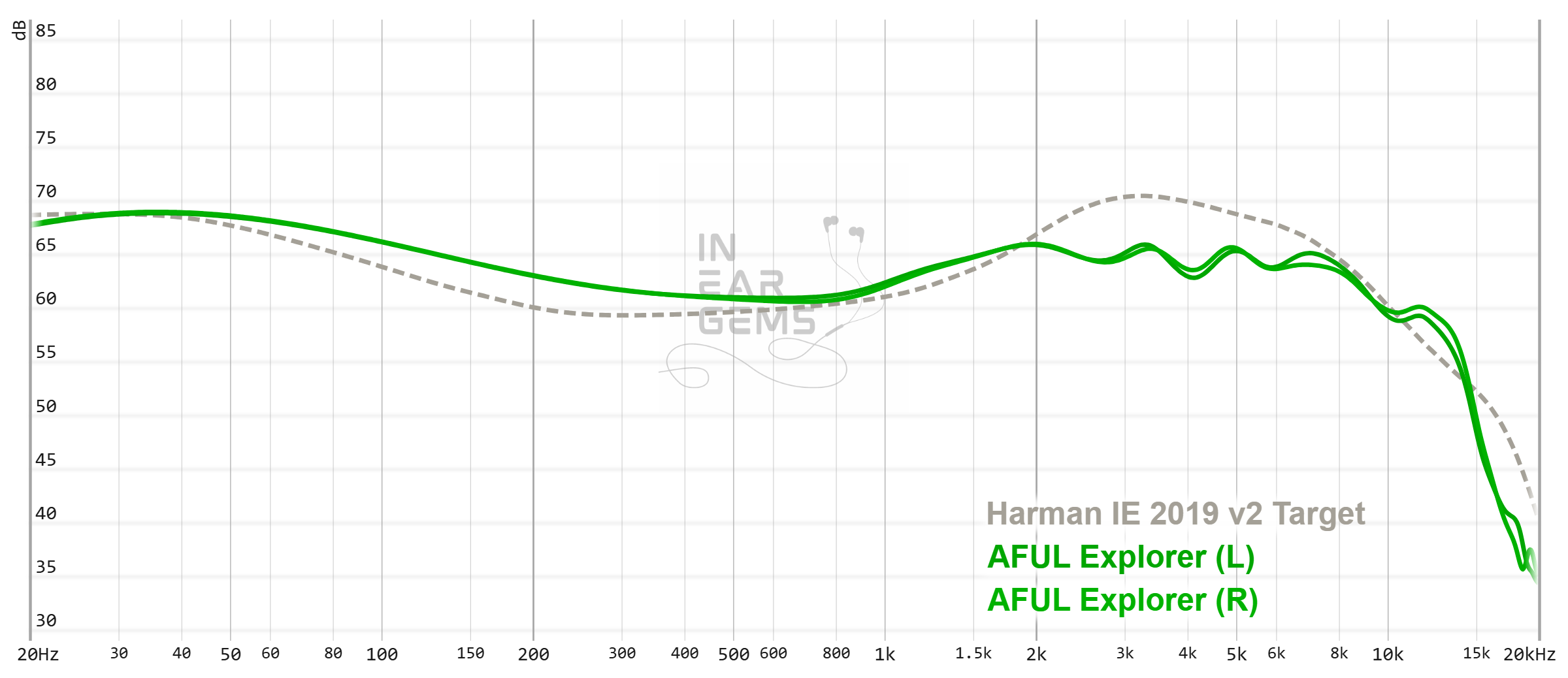
It is helpful to think of an IEM as a filter that highlights or subdues different parts of the incoming audio signal. This effect can be measured objectively by the squiggly lines above, called Frequency Response (FR) graphs, which measure how loud an IEM is at different frequencies from 20Hz (bass) to 20kHz (upper treble). Subjectivity is how your ears and brain interpret the effect of that filter on your music and decide whether it is “enjoyable.” There are some “rules of thumb” when it comes to tonality, but most interesting IEMs usually bend the rules masterfully.
The sound signature of the AFUL Explorer belongs to the rare breed known as “L-shaped.” This signature is characterized by a pronounced bass response, a neutral-warm midrange, and an evenly extended treble that reaches far into the upper treble region. Bass instruments, such as double basses, lower strings of cellos, and trombones, are distinctly highlighted whenever they appear in the mix. Fortunately, this emphasis does not overpower the rest of the mix or create a “muffled” sensation.

For instance, when listening to Bach’s violin sonatas and partitas performed by Kavakos, the violin’s natural timbre is preserved with perhaps a touch more richness than usual, without any sense of unnaturalness. Similarly, in Vivaldi’s Four Seasons performed by Janine Jansen, the string instruments sound natural while the cellos and basses provide a prominent low-pitch rumble that anchors the performance with a sense of power. On the track “ABC (feat. Sophia Black)” from Polyphia’s album “Remember That You Will Die,” the bass slam is significant, yet the vocals remain clear and separated from the chaotic background instruments.
The treble loudness varies between tracks, with cymbals and hats usually in line with or behind the midrange instruments, resulting in a smooth and detailed treble that avoids being piercing or harsh. However, my only complaint about the tonality of the AFUL Explorer is that the upper midrange feels a few decibels too subdued, leading to a lack of “shine” and edge in female vocals and brass instruments, particularly around the 3kHz and 4kHz regions. Despite this, AFUL has done an excellent job with the L-shaped sound signature of the Explorer, creating a pleasant and natural tonality that works well with a variety of music genres while offering a fresh presentation compared to other IEMs that converge toward a Harman-like tonality. Overall, I rate the tonality of the Explorer as great (4/5).
Bass and perceived dynamic:
The AFUL Explorer’s bass performance can be evaluated through three distinct aspects: the articulation of transients, the weight of the transients, and the texture of the bass note itself. In terms of weight and transient response, the Explorer excels, providing a powerful and physical impact that is particularly evident in tracks like “Playing God” by Polyphia, where each bass drop is accompanied by a satisfying sense of air being pushed against the eardrum. Additionally, the texture of the bass is noteworthy, allowing me to discern the detailed rumble of double basses in orchestral pieces and the intricate low-pitch lines of bass guitars.
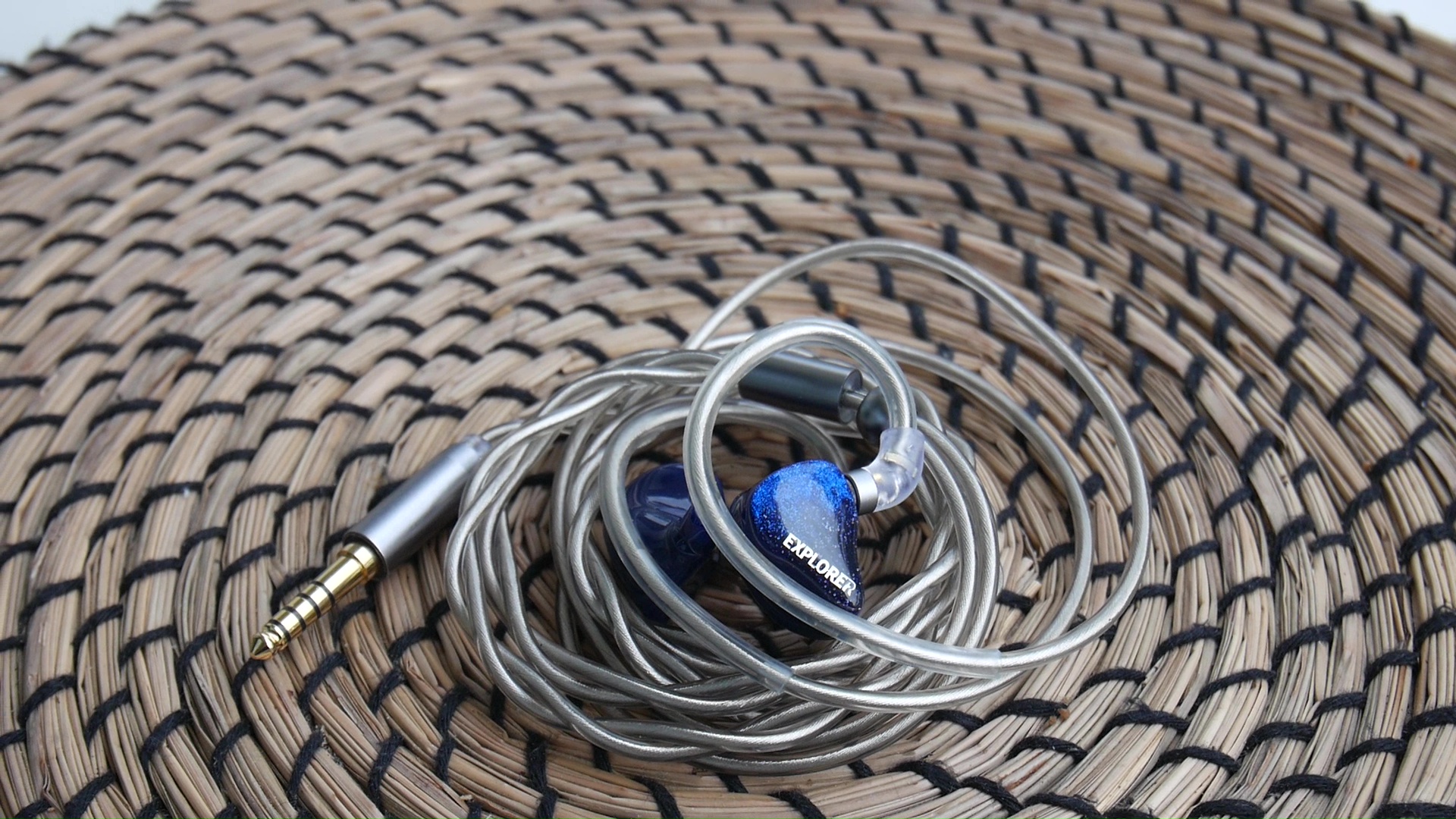
While the Explorer’s articulation of transients is acceptable, I personally still prefer even sharper attack and more pronounced bass slams. This could potentially be improved with added energy around the 5kHz region. Overall, the bass performance of the AFUL Explorer stands out, making it a key highlight of this IEM, earning a commendable rating of 4/5 (great).
Resolution: To me, “resolution” can be broken down into three components: (1) Sharpness, incisiveness, or “definition” of note attacks (see the figure above). (2) The separation of instruments and vocals, especially when they overlap on the soundstage. (3) The texture and details in the decay side of the notes. The first two give music clarity and make it easy to track individual elements of a mix. The last provides music details and nuances.

At a first listen, the AFUL Explorer might seem less incisive and articulate than it truly is due to its tonal balance. However, upon closer inspection, it becomes clear that note attacks remain well-defined, without being overly smoothed or rounded off. The attack edges of the notes are present, albeit less emphasized. The separation is commendable, although not without flaws. For instance, in more chaotic tracks such as those by Polyphia, it becomes challenging to distinguish and follow individual elements within the mix. This observation of “commendable, although not without flaws” extends to the details and textures of the musical notes in the midrange produced by the Explorer.
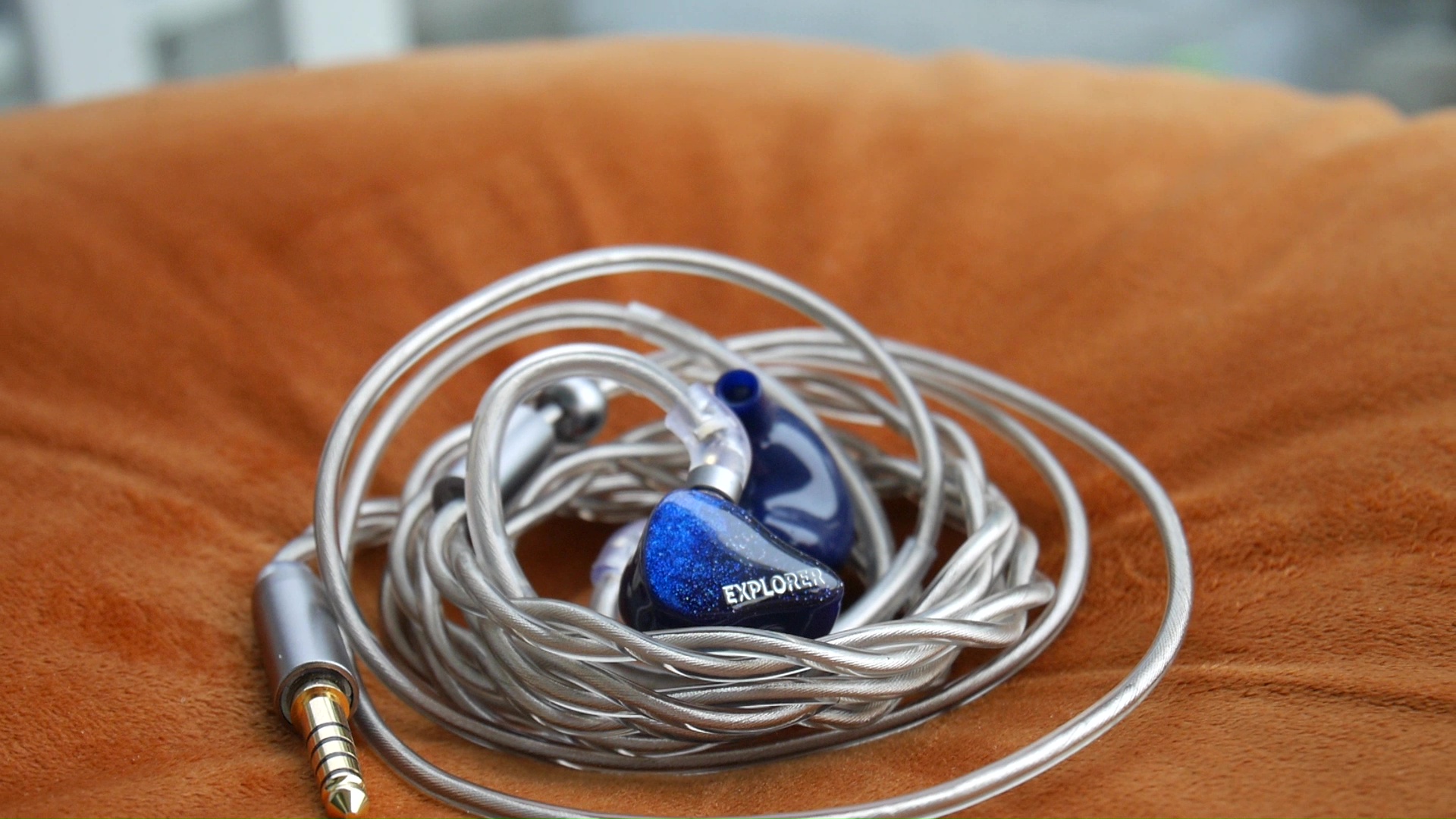
One area where Explorer impresses me was the resolution of the treble. When focusing on cymbals and hi-hats in Polyphia tracks, I can discern subtle details in the decay of cymbal hits, rather than just a high-pitched splashy noise. In direct comparison to my benchmark IEMs, the AFUL Explorer matches the resolution of the Moondrop Blessing 2, which I consider my standard for a “Good” rating of 3/5. Consequently, I rate the resolution of the AFUL Explorer as 3/5 (Good).
Stereo imaging and soundstage: Stereo imaging or “soundstage” is a psychoacoustic illusion that different recording elements appear at various locations inside and around your head. Your brain creates based on the cues in the recording, which are enhanced or diminushed by your IEMs, your DAC, and your amplifier. In rare cases, with some specific songs, some IEMs can trick you into thinking that the sound comes from the environment (a.k.a., “holographic”)

The soundstage of the AFUL Explorer is somewhat confined, with the “sphere of sound” primarily located within my head. Yet, this presentation offers a sense of three-dimensionality. Beyond the typical left-to-right placement of instruments, I can discern a clear sense of near-to-far positioning. Occasionally, instruments and vocals seem to float higher in the stage, almost as if they are above me.
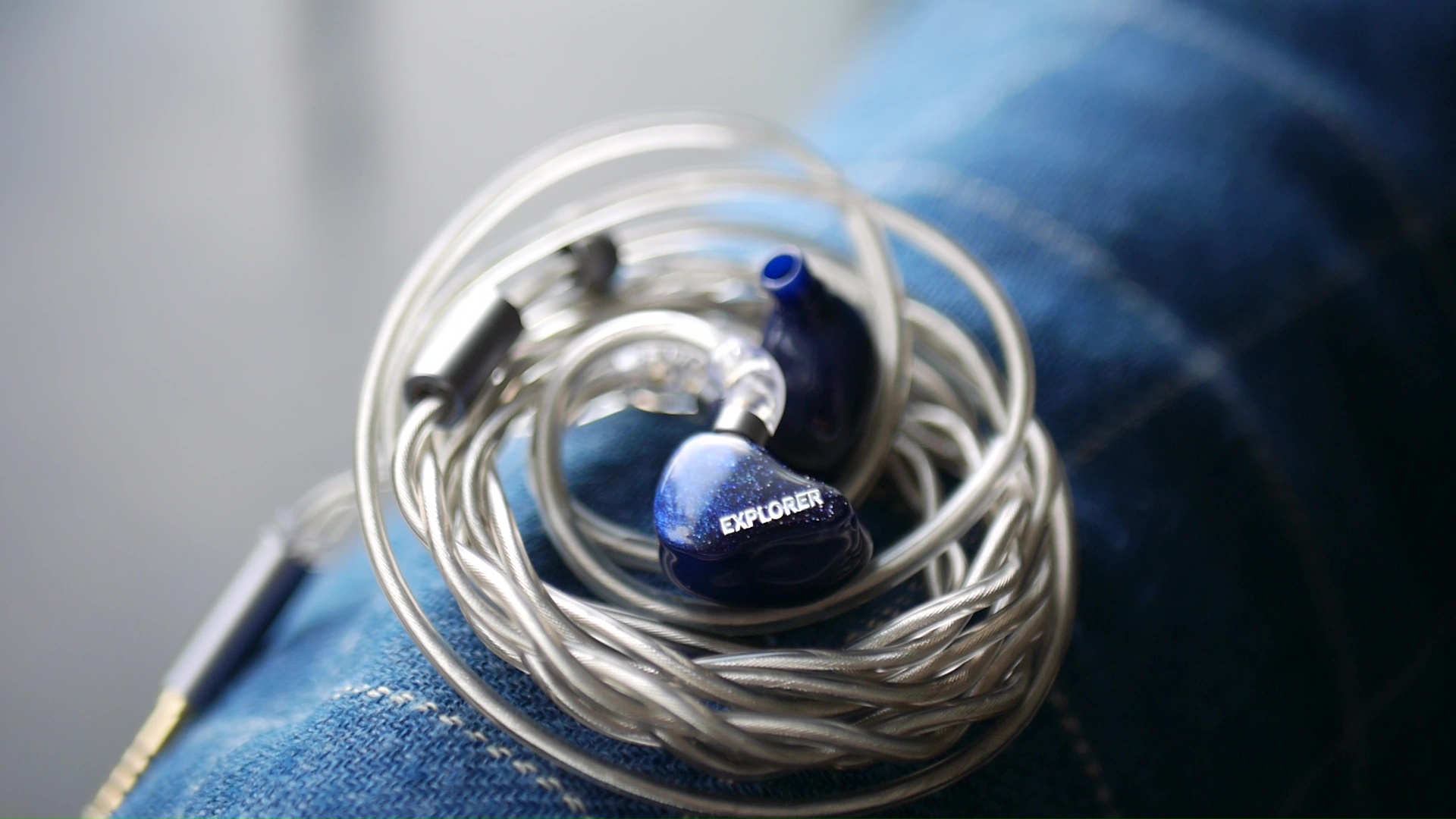
Typically, the bass lines are positioned closer, while the midrange is set further back. Adjusting the volume also affects the perceived distance of the soundstage; at lower volumes, the bass feels more immediate and central whilst the midrange sits further back reminding me of listening to my near-field speakers, while at higher volumes, the midrange becomes more prominent, with the bass pushed forward all the way to the back of my head. Overall, I would rate the soundstage and imaging performance of the AFUL Explorer as good (3/5), with the depth and layering it achieves compensating for the otherwise compressed stage.
Multimedia usage:
When it comes to FPS gaming with the AFUL Explorer, I find the experience quite immersive. The soundstage presents itself in a spherical manner, allowing me to gauge the direction and distance of various in-game sounds fairly accurately. However, I do notice that the positioning could be a bit sharper.
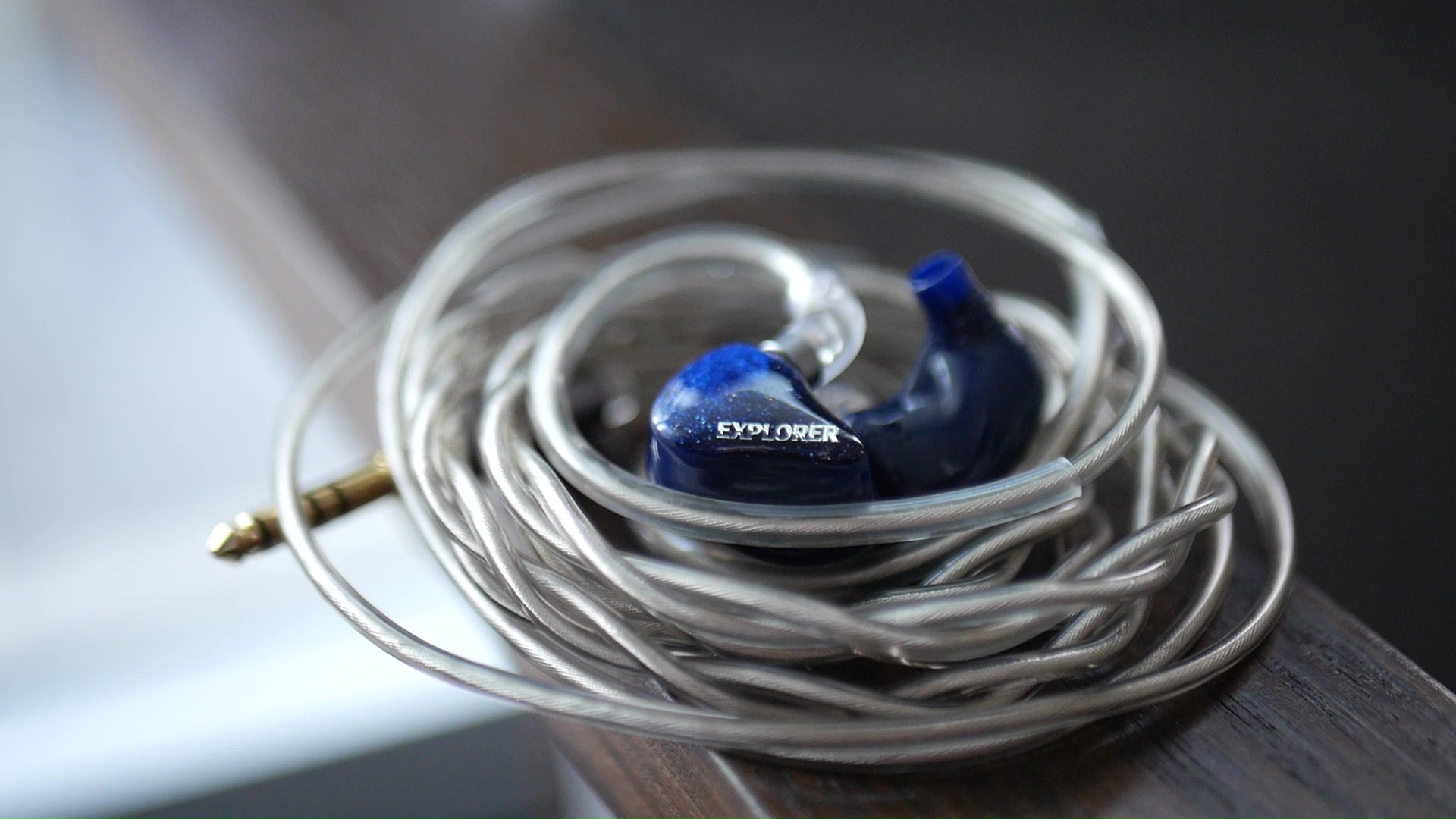
As for multimedia usage, particularly movies and video games, the bass of the AFUL Explorer adds a layer of depth and atmosphere to the audio. It enriches the sound, making cinematic experiences more engaging and interactive.
Pairing
AFUL Explorer is a rather easy-to-drive IEM. It delivers a decent performance straight out of the Apple dongle. However, its true potential begins to unfold when paired with slightly more capable sources, such as micro digital audio players like the HiBy R3II. Here, the stage of the AFUL Explorer can extend marginally, offering a slightly enhanced listening experience. For those seeking an even further improvement in sound quality, transitioning to high-end DAPs with stronger amplifiers or integrating it into a desktop setup could yield more noticeable enhancements.
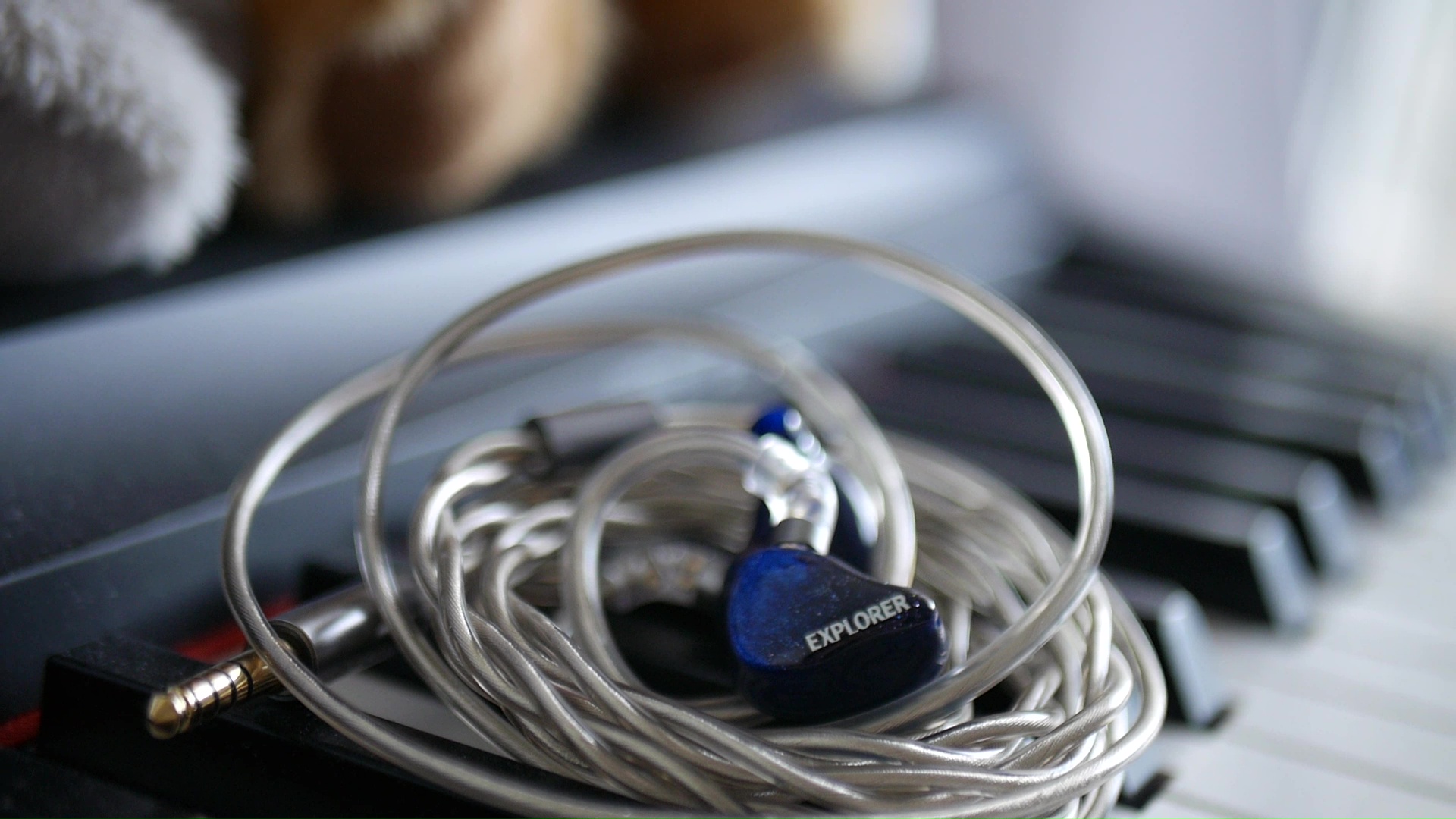
Comparisons
In comparing the AFUL Explorer against AFUL’s entire lineup, I found distinct differences in tonality, bass quality, soundstage, and resolution.
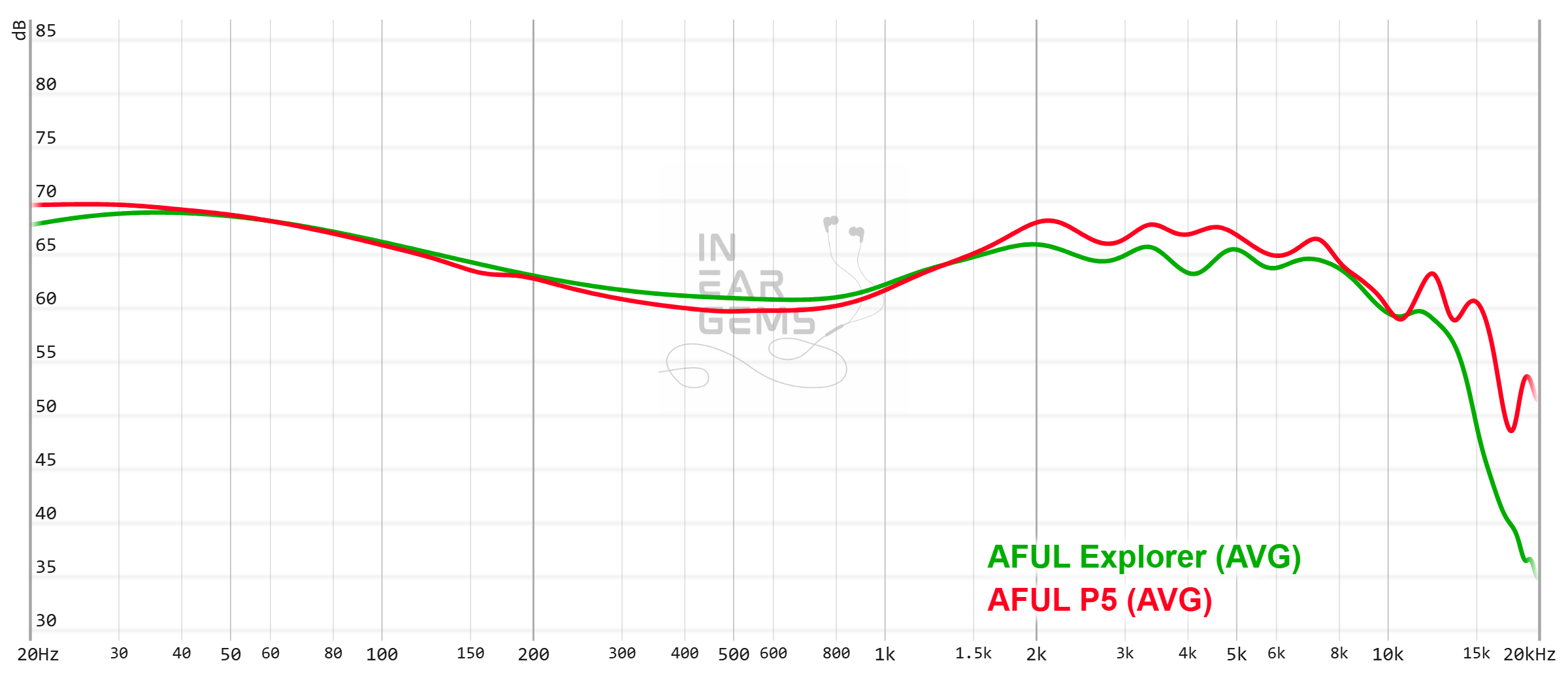
When pitted against the AFUL Performer 5, the Explorer offers a smoother, L-shaped tuning compared to the Performer 5’s V-shaped signature. Explorer boasts better bass quality while maintaining a compressed yet more interesting soundstage with improved depth and layering. However, Performer 5 edges out slightly in resolution and note articulation.

Against the AFUL Performer 8, the Explorer stands out with its more balanced tonality, contrasting the Performer 8’s honky midrange and edgier treble. While Performer 8 excels in resolution, Explorer’s bass quality surpasses it. Despite Performer 8’s technical prowess, Explorer presents a viable alternative with its overall tonal balance.
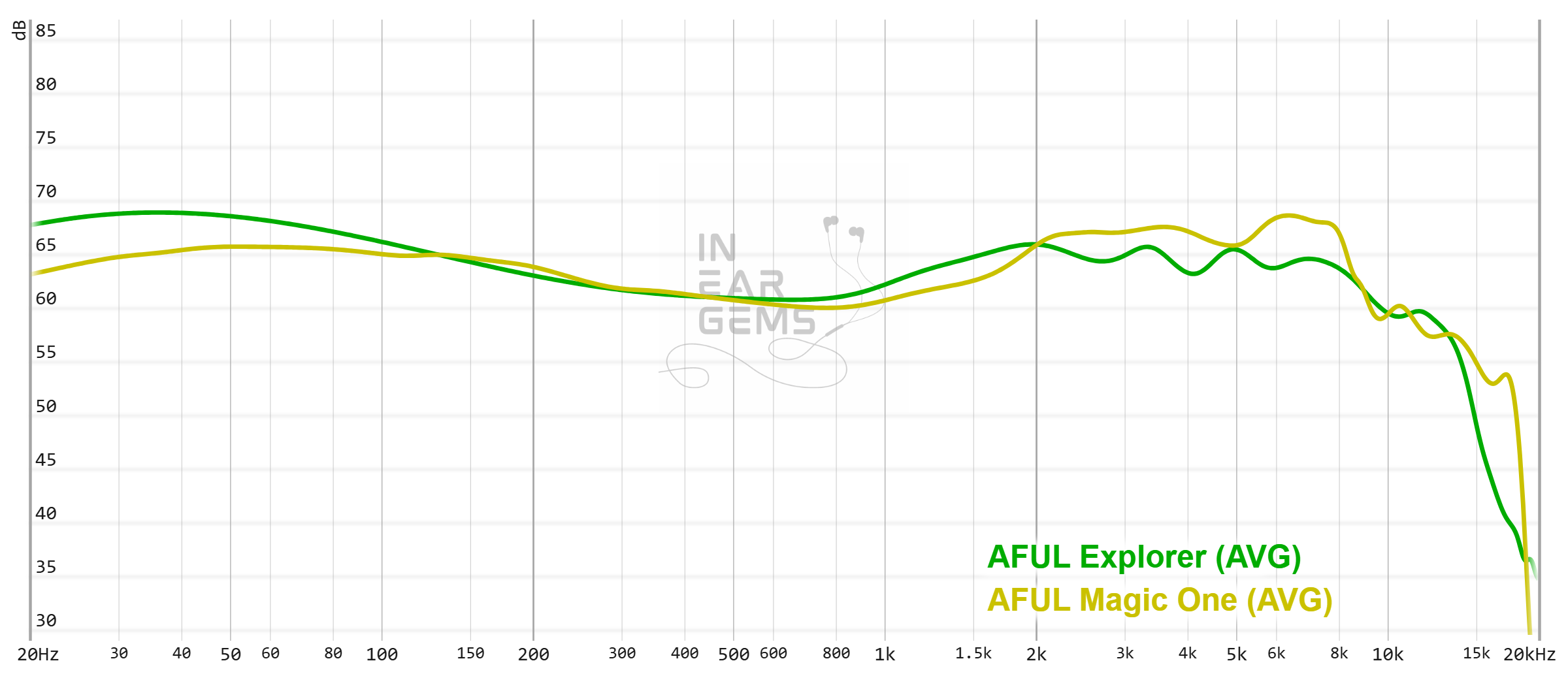
Finally, compared to the AFUL Magic One, the Explorer delivers a thicker, denser sound with significantly more bass. While Magic One offers a more open soundstage and superior midrange, Explorer’s bass prowess remains unmatched.
Conclusions
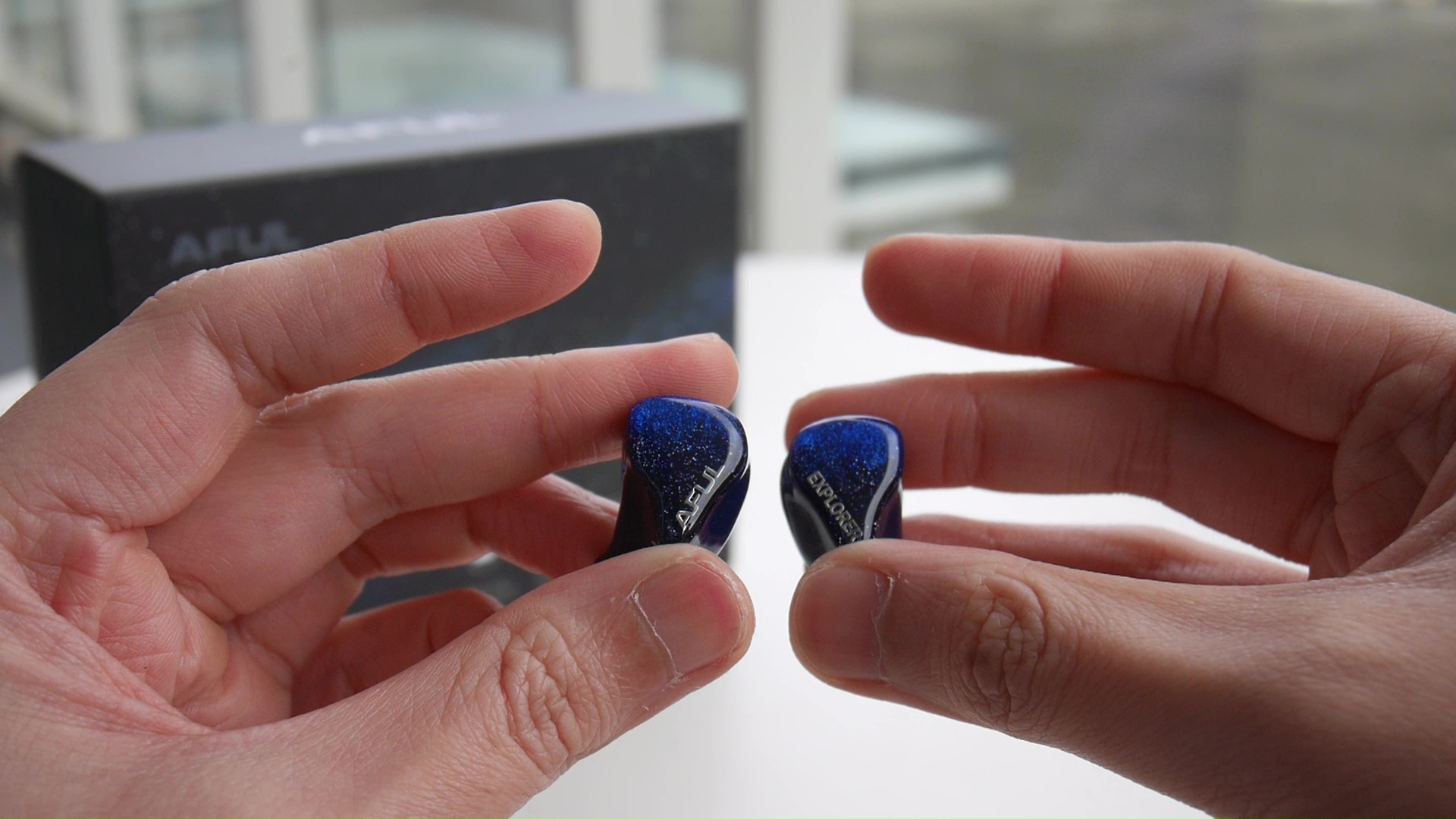
The AFUL Explorer offers a rare “L-shaped” sound signature characterized by pronounced bass, neutral-warm midrange, and extended treble. Its bass performance excels in weight, transient response, and texture, providing a powerful impact while maintaining detailed rumble. Although the upper midrange feels slightly subdued, AFUL has crafted a pleasant and natural tonality that complements a wide range of music styles. The soundstage, though somewhat confined, exhibits depth and layering, compensating for its compressed nature. Overall, Explorer is another compelling entry and the first basshead in AFUL’s line up.
What I like about this IEM:
- BASS
- Stereo imaging, particularly depth and layering
- Well implemented L-shaped sound signature
- Fit and comfort
- Price
What could be improved:
- The stock cable has too aggressive ear hooks
- A few dB extra around 3-5kHz could improve the articulation and dynamic
Absolute Sonic Quality Rating: 3.5/5 - Very Good
Bias Score: 4/5 - I like this IEM
